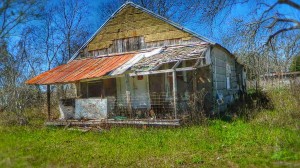Q. What is the standard, if any, for evaluating residential foundations in the Austin, Texas area?
A. Technically, none. However, in May 2009, the American Society of Civil Engineers (ASCE) adopted the “Guidelines for the Evaluation and Repair of Residential Foundationsâ€� version 2â€�. It is widely accepted by most practicing professionals as the “de facto” standard for evaluating residential foundation systems in the Austin, Texas area.
Q. What do mean by “de facto”?
A. To date, a method for evaluating residential foundations that combines the various civil, geotechnical, and structural evaluation aspects of residential foundation systems into one concise document geared for Texas soils has not been authored. With its wide acceptance and ongoing use by most professionals, the “Guidelines for the Evaluation and Repair of Residential Foundations� version 2� thus becomes an accepted structural inspection standard in Texas.
Q. Why was there a need to establish a standard for inspecting residential foundation systems in Texas (Austin)?
A. The need grew out of the response of many Section members to the Policy Advisory issued by the Texas Board of Professional Engineers (TBPE, Austin, Texas) Â in 1998.
Q. What did the Policy Advisory address?
A. Residential foundation engineering. Many ASCE practitioners expressed the opinion that technical guidelines should more rightly be created by a technical society such as ASCE rather than by the TBPE. One goal of the guidelines has been to provide the TBPE with guidance in their evaluation of complaints brought against engineers practicing residential foundation engineering.  The Guidelines help to assure foundations are evaluated against a common standard.  In doing so, the same evaluation standard is applied to multiple foundation systems throughout Texas, including Austin.  This provides the end user (customer) of the engineering opinion an objective measure of the structural status (strength and performance) of a particular foundation system.  In other words, regardless of the size, geometry, or geographical location of the foundation system, the foundation evaluation findings can be relied upon because there is an “apples to apples” comparison between different foundations and the ASCE guidelines.
Q. Who wrote the guidelines?
A. Experienced engineers. Civil, structural, forensic, and other types of engineers. Several of theses engineers testified as experts in the Texas courts.
Q. How were the guidelines put together?
A. One committee and two subcommittees were formed to address the raised concerns. One subcommittee addressed “Recommended Practice for the Design of Residential Foundations�, and the other worked to develop “The Guidelines for the Evaluation and Repair of Residential Foundations�. The Residential Foundation Oversight (“Oversight�) Committee provided review guidance to the two previously mentioned subcommittees.
Q. Were the committee members licensed engineers?
A. Yes. The Oversight Committee and both subcommittees were composed entirely of ASCE members who were licensed engineers. Subcommittee membership was open to any Texas Section member who wished to participate. The dollar value of the professional services donated to the effort is conservatively estimated to exceed $1,000,000.
Q. Are the Guidelines mandatory or optional ?
A. The Guidelines are not intended to be Standards, but are guidelines only, reflecting the engineering opinions and practices of the committee members. They in no way replace the basic need for good engineering judgment based on appropriate education, experience, wisdom, and ethics in any particular engineering application. Thus, they are primarily suited as an aid for and use by engineers.
Q. What type of engineer can perform a residential foundation evaluation?
A. According to an advisory opinion (EAOR #16) issued by the Texas Board of Professional Engineers on 2-24-2006, “There is no requirement in the Texas Engineering Practice Act (the Act) to practice engineering only in the area that was tested for during the Principles and Practice examâ€�. And, “…the Texas Legislature has only identified the licensing of an engineer, not specific disciplinesâ€�. Finally, “…All engineers are required under the Act to practice only in their area(s) of competence…â€�
Structural Engineer Inspection – Austin
